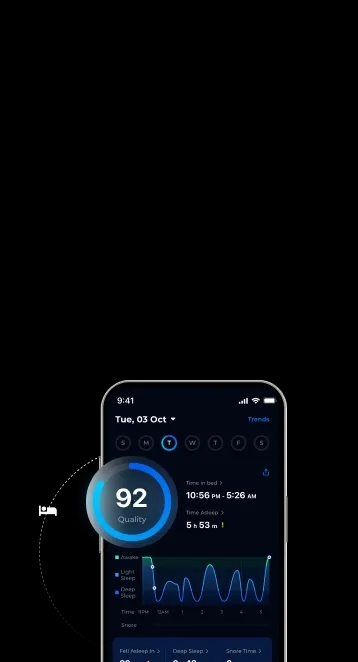


Have you ever wondered why babies smile while sleeping? It’s a fascinating phenomenon that has puzzled parents for generations.
In this article, we’ll explore the science behind those adorable newborn baby smiles. From the different stages of sleep to the development of smiling muscles, we’ll uncover the secrets behind this heartwarming behavior.
Plus, we’ll discuss how baby smiles promote social connections and better sleep. So, if you’re curious to understand what makes your little one smile during dreamland, keep reading.

There are three main reasons why babies smile in their sleep.
First, smiles in babies are reflex actions similar to sneezing and coughing when something irritates your nasal passages. Baby’s first smile is usually a reflex smile, which is a spontaneous movement of the facial muscles. This reflex smile isn’t a reaction to any external stimulus but rather a result of the baby’s developing nervous system [1].
Second, newborn smiles or laughters may be a sign of pleasant dreams or positive emotions they’ve had while awake.
Lastly, little smiles during sleep may simply be a result of the baby’s brain activity, as they enter the rapid eye movement (REM) stage of sleep [2]. During REM sleep phase, the brain is highly active, and this increased brain activity may trigger involuntary sleep smiles in babies. These smiles are not social reactions, they are just a sign that your baby has gone through the deepest of NREM sleep to the REM phase.


As you enter the realm of sleep and its stages, you may wonder how these stages contribute to the adorable phenomenon of babies smiling in their slumber. The answer lies in the REM sleep cycle, or rapid eye movement sleep, which is when dreams occur. Here’s how the sleep stages and smiling connect:
Understanding these sleep stages helps explain babies’ reasons for smiling during sleep, adding to their overall cuteness factor.
To understand the distinction between reflex-like smiles and genuine smiles in babies, it’s important to explore the underlying factors that contribute to these different types of smiles.
Reflex-like smiles are a form of facial expression that a baby may make in response to internal physical feelings such as gas or hunger. These smiles aren’t necessarily indicative of the baby’s emotions or cognitive development.
On the other hand, genuine smiles, also known as social smiles, are more deliberate and are believed to be generated in the cerebral cortex. Genuine smiles during sleep may indicate more advanced cognitive development [3].
It’s fascinating to observe the different types of smiles that babies display, both while they’re awake and during their peaceful slumber.
If you have any concerns about your baby’s smile or laugh, it’s important to address them and seek guidance from a healthcare professional.
Some concerns related to your baby’s smile or laugh during sleep may include:

The significance of baby smiles lies in their ability to foster positive emotional connections and facilitate bonding between infants and their caregivers. When a baby starts smiling, whether it’s during sleep or while awake, it brings joy and happiness to those around them. Smiles in babies aren’t only adorable, but they also serve as a way for infants to communicate their contentment and satisfaction.
The early smiles in babies, including those during sleep, can create a strong bond between the baby and their caregivers. It’s a way for the baby to express their trust and reliance on their caregivers, and for the caregivers to feel a deep connection and love for the baby.
These smiles in babies are an essential part of their emotional development and contribute to their overall well-being.
Encouraging your baby to smile can be a delightful and rewarding experience for both you and your little one. Here are some tips to help you bring out those adorable smiles:
By incorporating these activities into your interactions with your baby, you can create a positive and joyful environment that encourages your baby to smile and laugh.
In short, a baby’s smiles occur during sleep as a form of reflex, a sign of positive dreams or emotions or it could be due to their brain activity. When your baby starts to smile, it’s often not a concern. However, in rare cases, a baby’s smile or laughter may be a sign of gelastic seizures which are characterized by uncontrollable laughing fits. Do consult a pediatrician if you are unsure.
Want to better understand your baby’s sleep? ShutEye® app helps you track and improve your little one’s sleep with expert-backed insights and soothing sounds. Try it now for free!
Carroll Orthodontics (2025) What Makes Babies Smile: The Science Behind Your Smile Part 3 [online]. Available at: https://drcarrollorthodontics.com/what-makes-babies-smile-the-science-behind-your-smile-part-3/
Heger, E. (2024) When do babies start smiling? [online]. Available at: https://www.babycenter.com/baby/baby-development/my-7-week-old-doesnt-smile-yet-whats-wrong_2598
Reece, T. (2023) What To Know About When Babies Start Smiling [online]. Available at: https://www.parents.com/baby/development/laughing/when-do-babies-start-smiling/